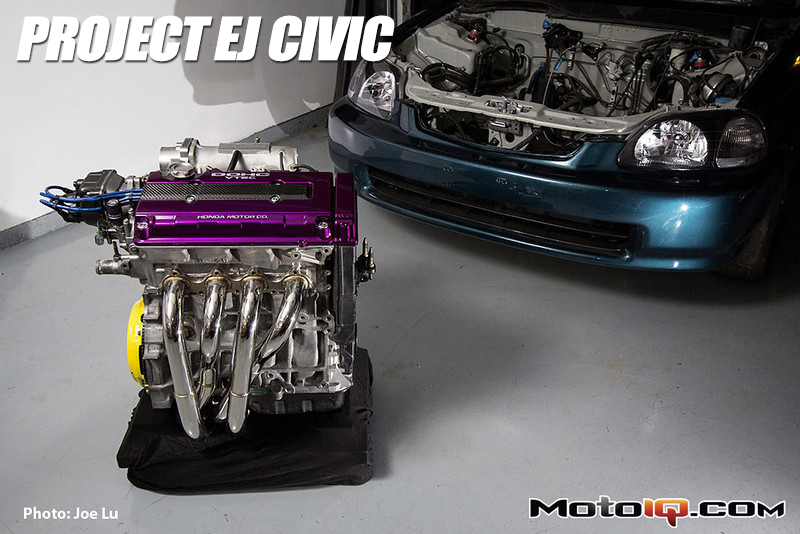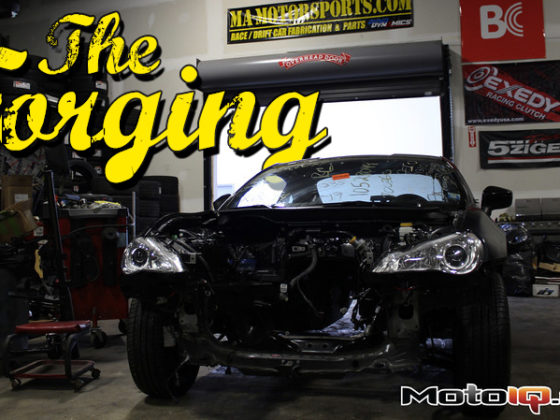,
 |
| We replaced our OEM springs (left) with a set of Skunk2 valve springs (right). |
The Skunk 2 spring kit utilizes a dual spring design with a smaller, inner spring placed inside of a larger outer spring. Paired together, the two springs are stiffer than OEM and work effectively in limiting harmonic issues at both low and high RPM. This is accomplished through increasing the stiffness of the valve spring assembly, which in turn increases the natural frequency of the spring assembly itself.
 |
| A stiffer single spring could be designed by changing the material of the spring or playing with the number of active coils, wire and/or spring diameter. However, increases in spring stress usually accompany increases in spring stiffness, which could lead to the spring’s early demise. |
There are other methods for retaining a single spring such as a multiple arc (MA) wire which is “ovate” in cross section and buries spring stress risers further inside of the spring. However, the dual spring design in many cases is a more economically feasible option.
 |
 |
| Our Skunk2 titanium retainers each weighed in at 4 grams less compared to the OEM steel retainers. |
Our last step in combating harmonic issues associated with high RPM operation was to install a set of Skunk 2’s titanium valve spring retainers. Titanium is strong enough to handle the compressive forces exerted upon it by the springs and yet light enough by volume to reduce sprung weight from the valvetrain assembly. Reducing the sprung mass lowers inertial forces allowing the springs to better control valve movement at higher RPM.
 |
| Skunk2's titanium retainers were employed to reduce valvetrain mass for improved high RPM stability. |
Our Skunk 2 units were precision CNC machined to properly locate and match the ID of both the inner and outer valve springs. Too tight of a fit between the spring can cause additional stress on the inside diameter of the spring leading to premature failure. Too loose of a fit, will allow the spring to rattle around radially, which wouldn’t be the best for valvetrain stability now would it?
 |
| So we were too busy putting together the engine and forgot to take a picture of the valve lapping process. So instead, here’s a picture of some naked chicks and a tiger doing the Harlem shake, enjoy. When you pervs are done staring at that picture, we can get back to business. |
With the first half of our valvetrain sorted, we then began the assembly of our B18C1 cylinder head by lapping each of the valves to their respective valve seats. Essentially, lapping “marries” the valve to the valve seat. This is done by placing a small amount of abrasive lapping or grinding compound in between the seat and valve and then using a lapping tool to spin the valve back and forth. If done correctly, this removes a small amount of material and helps conform the valve and seat surfaces together to promote better valve seal. Pervs.



